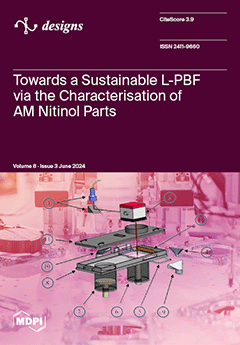The blending of biodiesel with petroleum diesel attracts much attention due to its high potential in reducing emissions. In this work, waste sunflower oil was converted to biodiesel by the trans-esterification method, and it was blended with petroleum diesel in three ratios (10,
[...] Read more.
The blending of biodiesel with petroleum diesel attracts much attention due to its high potential in reducing emissions. In this work, waste sunflower oil was converted to biodiesel by the trans-esterification method, and it was blended with petroleum diesel in three ratios (10, 30, and 50%). The impact of using these blended fuels in a four-stroke engine on engine performance and exhaust emissions at three engine loads (2, 4, and 6 N.m) was investigated and compared with the use of petroleum diesel and biodiesel. The engine performance was evaluated by determining the brake-specific fuel consumption (BSFC), engine effective power (Ne), brake-specific energy consumption (BSEC), brake thermal efficiency (BTE), and noise intensity. The evaluation of emissions from the engine exhaust was carried out by measuring the levels of carbon oxides (CO and CO
2), hydrocarbons (HC), nitrogen oxides (NO and NO
2), and particulate matter (PM). The results show that blending diesel with up to 30% biodiesel can reduce CO, HC, and PM emissions by 29.6 ± 1%, 26.0 ± 4%, and 31.0 ± 3%, respectively. However, this decrease is associated with increasing CO
2 and NOx emissions by 18.5 ± 2.5% and 29.0 ± 6%, respectively. In addition, the engine showed acceptable performance when using up to 30% biodiesel, where the increase in fuel consumption was limited to 5.8 ± 0.3%. In addition, the engine’s effective power increased with the blending ratio of 10% by 2.0 ± 0.6%, but then decreased with the blending ratio of 30% by only 2.0 ± 0.6%. The noise intensity was also decreased by 2.4%, while BSEC and BTE were reduced by only 2.9 ± 0.9% and 3.5 ± 1%, respectively. The results of this work provide deep insights regarding the utilization of waste sunflower oil as biodiesel to be blended with petroleum diesel, which is a considerable novel approach in the energy and environmental sectors.
Full article




